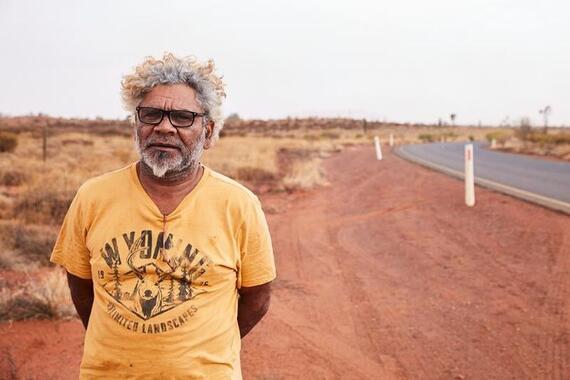Magnum Foundation Photographer Spotlight: Tace Stevens and the Kinchela Aboriginal Boys Training Home, Australia

In 2022, World Monuments Fund (WMF) and Magnum Foundation announced that they were partnering to support local photographers around the world in documenting the sites on the 2022 World Monuments Watch and the communities around them.
Tace Stevens is a Noongar and Spinifex photographer and filmmaker currently based in Sydney. For her project, she will be working with the Survivors of the Kinchela Aboriginal Boys Training Home (KBH), a state-run institution that imprisoned hundreds of Indigenous boys between 1924 and 1970 as part of Australia’s policy of forced assimilation. We spoke to Tace as part of a series of interviews with the Magnum grantees. An excerpt of our conversation, edited for clarity and length, can be found here:
WMF: Kinchela is of course a major site in the history of Australia’s Stolen Generations, the generations of Indigenous children removed from their families and culture. Have you done previous work related to this topic?
Tace Stevens (TS): In 2020, when COVID began, I was in my second year of film school, and so I went back home to Perth. That semester, everyone had to do a documentary, and I was really struggling with ideas. My sister was in year 12, and she was painting a massive portrait of my nana in the backyard for her for one of her assessments. And so then I was like, “Oh, maybe I could do a documentary about my nana.” She was a member of the Stolen Generations—she was put in a mission for seven years, New Norcia Mission.
I did a lot of research, and one of my aunties had a massive stack of papers that she'd gotten from the [Department of] Native Welfare. And so I was looking through all that and discovered a letter from my nana's father requesting permission to get her and her siblings out of the home because they weren't getting an education, they were doing domestic chores. They weren't receiving the shoes that he had bought for them or the clothes. And there was a handwritten reply from one of the nuns saying it was all in his imagination, so his request was denied.
That's something that I bring to this project—that sensitivity, that understanding. This project is a way for me to be able to help other people tell their story and hopefully for it to be part of the healing process for them and their families. It’s something really powerful. I'm in it for the long haul. I just really wanna take the time to get to know the Uncles and their families and in a way just become part of their extended family.
WMF: Are you hoping to incorporate video into your project at Kinchela as well?
TS: I'm really keen to include audio alongside the photographs, just to give the audience more context to be able to relate and connect to the Uncles’ stories. Anything that I can create or capture and give to the [Kinchela Boys Home Aboriginal Corporation] so that they can use it in whatever capacity for the Uncles to have their stories that they can keep and own... The corporation wants there to be a museum on the site, and for this museum to be a place of truth telling and healing. So that's exciting; that's something that I've been keeping in mind with the things that I create and capture.
WMF: Did you know much about the story of Kinchela before you started this project?
TS: I've been in Sydney for about nine years now, and there are two well-known missions over here that I had heard about, but I'd never read any of their stories or heard about [Kinchela] until I started on this project... The stories have been really hard to read. But it’s important for everybody to know about it.
I want to look at the past but also the present because despite everything that's happened, the Survivors have created beautiful lives for themselves and their families. In amidst all the darkness, there's still light, there's still hope, there's still life that's happening. And throughout this project I wanna focus on all the different relationships that the Survivors have: with them individually, with their Brothers, like with the other Survivors, but also their families and the communities that they interact with.
At the end of this project, I just hope that it really, that this project is respectful, that it honors their experience and their truth. I hope that they will see that, that they'll feel that. But also for Aboriginal people nationwide to be able to understand and connect to this project. But I'm also interested in making sure, you know, “How do I capture the attention of people who are from a different background?” So that's something that I'm very conscious of: how do I make people feel impacted, or can something grab their attention when they see these photos?
To read more interviews with the Magnum Fellows, click here.
Learn More
World Monuments Fund safeguards cultural heritage around the globe, ensuring our treasured places are preserved for present and future generations.
Sign up for our newsletter to receive regular updates on our projects, stories from the field, upcoming events, and more!
